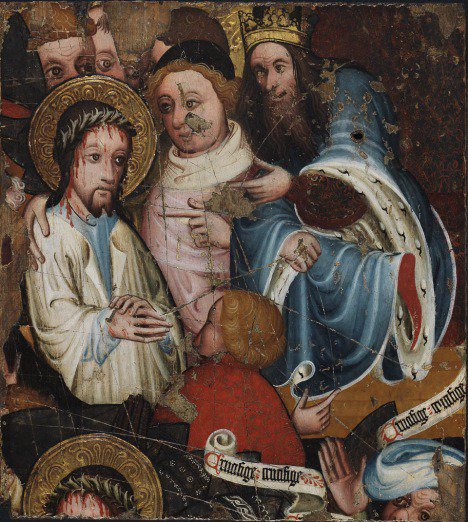Art under Attack
dal 1/10/2013 al 4/1/2014
Segnalato da
1/10/2013
Art under Attack
Tate Britain, London
Histories of British Iconoclasm. Exploring the history of physical attacks on art in Britain from the 16th century to the present day. Iconoclasm describes the deliberate destruction of icons, symbols or monuments for religious, political or aesthetic motives. The exhibition examines the movements and causes which have led to assaults on art through objects, paintings, sculpture and archival material.

Art under Attack: Histories of British Iconoclasm is the first exhibition exploring the history of physical attacks on art in Britain from the 16th century to the present day. Iconoclasm describes the deliberate destruction of icons, symbols or monuments for religious, political or aesthetic motives. The exhibition examines the movements and causes which have led to assaults on art through objects, paintings, sculpture and archival material.
Highlights include Thomas Johnson’s Interior of Canterbury Cathedral 1657– the only painting documenting Puritan iconoclasm in England – exhibited for the first time alongside stained glass removed from the windows of the cathedral. Allen Jones’s Chair 1969 is on display, as well as evidence of statues destroyed in Ireland during the 20th century. The show consides artists such as Gustav Metzger, Yoko Ono and Jake and Dinos Chapman, who have used destruction as a creative force.
Religious iconoclasm of the 16th and 17th centuries is explored with statues of Christ decapitated during the Dissolution, smashed stained glass from Rievaulx Abbey, fragments of the great rood screen at Winchester Cathedral and a book of hours from British Library, defaced by state-sanctioned religious reformers. These works are accompanied by vivid accounts of the destructive actions of Puritan iconoclasts.
Examples of attacks on symbols of authority during periods of political change include a portrait of Oliver Cromwell hung upside down by the staunch monarchist Prince Frederick Duleep Singh (1868–1926). It also shows fragments from statues of William III and Nelson’s Pillar destroyed by blasts during political struggles in Dublin in 1929 and 1966 respectively.
Suffragettes’ targeted attacks on cultural heritage are illustrated with works by Edward Burne-Jones’s Sibylla Delphica 1898, attacked in 1913 in Manchester, the birthplace of Emmeline Pankhurst, as well as John Singer Sargent’s Henry James 1913, slashed at the Royal Academy in 1914. These are accompanied by archival descriptions of the actions carried out and police surveillance photography of the militant Suffragette protagonists.
Assaults on art stimulated by moral or aesthetic outrage include those on Carl Andre’s Equivalent III 1966, and Allen Jones’s Chair 1969, damaged on International Women’s Day in the 1980s. The show reveals how for some modern artists destruction has been utilised as a creative force. The piano and chair destroyed by Ralph Ortiz during the 1966 Destruction in Art Symposiusm is on public display for the first time, alongside audio recordings of this action and works by Gustav Metzger, John Latham and Yoko Ono. Portraits from Jake and Dinos Chapman’s One Day You Will No Longer Be Loved series, Mark Wallinger’s Via Dolorosa 2002 and Douglas Gordon’s Self-portrait of you and me 2008 are also be included.
Image: Art Under Attack Anon Christ before Pilate c1400–25
Anon, Christ before Pilate c.1400–25
© The Fitzwilliam Museum, Cambridge
Press contact:
Kate Moores / Alexandra Jacobs, Tate Press Office
Call +44(0)20 7887 4906/4942 Email pressoffice@tate.org.uk
Tate Britain
Millbank, London
Open daily 10.00 - 18.00
Adult £14.50 (without donation £13.10)
Concession £12.50 (without donation £11.30)
Help Tate by including the voluntary donation to enable Gift Aid
Additional booking fee of £1.75 (£2 via telephone) per transaction applies



